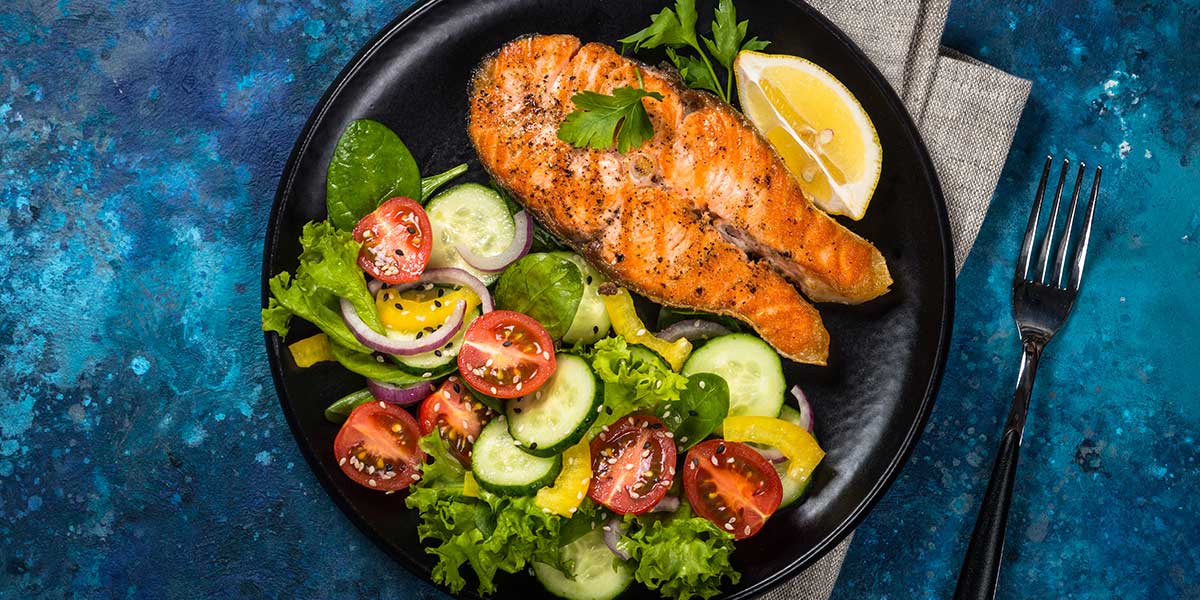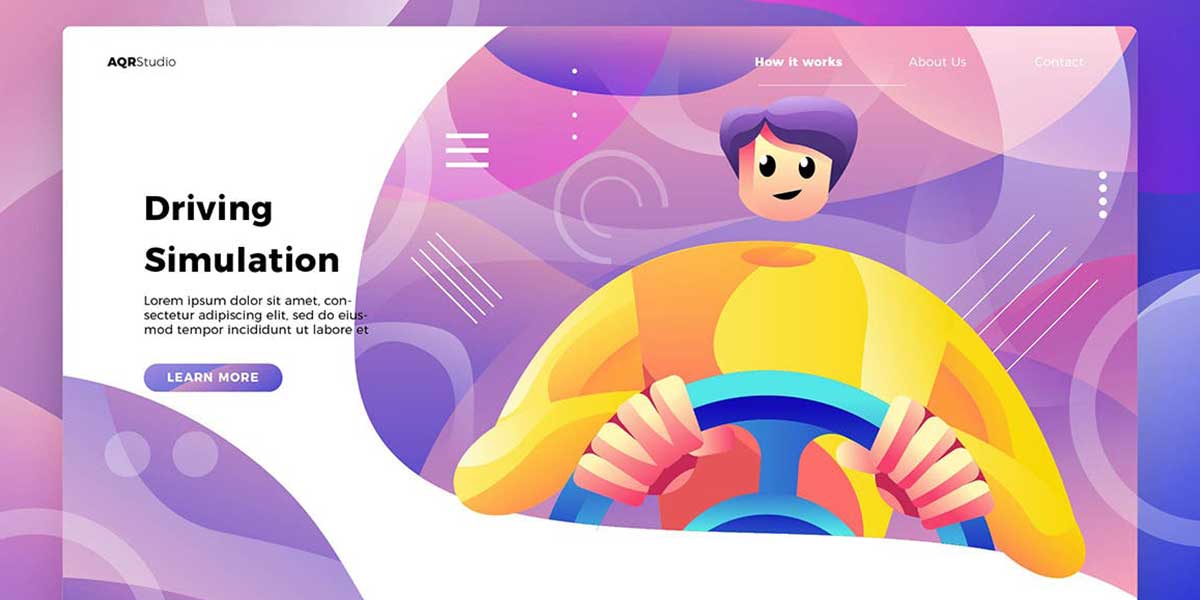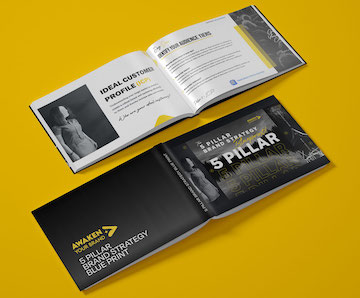So far in this series, we’ve explored funnels — how and why they work, how to optimize them, and how to master the landing page. Today, we’re going to talk about the type of funnel that most online marketers use, and how to optimize it. You see, there’s a secret weapon out there that you probably haven’t been told about—because who wants to help their competition?
But in this post, we’ll spill the beans.
You’re about to learn all about the savvy online marketer’s secret weapon—and how to use it yourself. In the next post, we look at how to create killer headlines for your funnels.
Let’s get started.

What is a Low Touch Funnel?
As you’re no doubt aware, there are many ways to sell a product or service. Daily, we all run into multiple examples. For instance, in any high-end fashion store, you’ll be met by sales staff—likely at the door—who will welcome you and then attempt to ascertain what you’re looking for. They may then guide you to a specific department, in the process handing you off to another sales rep. This rep, a specialist, will help you find the item you came in for.
This example from the brick and mortar world illustrates a high touch sales funnel. The defining characteristic of such a funnel is that every step along the way, from curiosity to sale, requires the involvement of a salesperson.
Another example would be the world of enterprise software. A typical sales cycle in this industry can last up to 24 months. One factor contributing to this long sales cycle is the fact that the customer will be locked in for several quarters, if not years. In order to snag those contracts, sales reps for enterprise software firms make sales calls, act on warm leads via email marketing and attend pitch meetings with prospects.
Sounds like a lot of work, doesn’t it?
For most online endeavors, what you want instead is what’s known as a low touch funnel.
To continue with our theme of brick and mortar examples, a store like Wal-Mart or Target is relatively low touch. If you go into a Wal-Mart, you might be greeted at the door, but no sales rep will follow you around, asking you questions.
But have you noticed that Wal-Mart, over the past several years, has invested in self-checkout systems?
For Wal-Mart, this isn’t just about lowering their reliance on human employees, though a cynical mind would be forgiven for assuming it is. What they’re also doing is offering a high tech solution for those customers ready to use it. What’s more, by providing self-checkout, they increase the flow of customers through their stores by lowering checkout line congestion. This in turn will allow them to make more money.
But the end result is that their sales funnel is even more low touch than it already was.
Amazon, with their Amazon Go project, is another good example of a low touch brick and mortar sales process.
In terms of online marketing, a low touch sales funnel is one that generates, nurtures and converts leads with little human interaction.

Do You Need High Touch or Low Touch?
Before you can optimize a low-touch funnel, you have to know whether you even need one. You see, there are a few products or services that benefit from the high-touch approach. Let’s take a look.
- Big-ticket items. Does your product cost more than $1,000? Or will it cost $10,000 or more over several years? If so, the low touch funnel is probably not your best bet. Instead, focus on a more hands-on approach that puts the emphasis on personal attention. You’re not relying on high volume, so you can afford to focus on nurturing leads.
- Are you B2B? B2B services typically require a more robust lead nurturing stage, so a high-touch sales funnel may be the way to go. The exception would be if you’ve created a SaaS and can offer a free trial and resources that show the prospect how to use the tool without any intervention from your sales staff.
- Are you a consultant? Do you sell your knowledge or access to your expertise? If so, you’ll probably want a more hands-on approach to lead nurturing, and that calls for a high-touch sales funnel.
- Do you sell a complex physical product through your online store? If you sell a very complex physical product that consumers have a lot of questions about, you may need a high-touch funnel. If prospects are intimidated by the complexity of your product, they’ll want to get clarification on how it works.
If you fall into any of the above categories, don’t fret. The information contained within this guide can still benefit you. If you don’t check any of the boxes above, however, then it’s likely that a low touch funnel is a way to go for you, and the information contained within this guide will definitely help you optimize your funnel.
Read on.

Preconceived Notions & Why They Matter
In order to construct a low-touch funnel, you’ll need to do a fair amount of work ahead of time. Think of it as baking in as much information as possible for the consumer. This way, the lead won’t require a lot of hand-holding. They can go from curious to converted without interacting with a life, breathing, human.
As we’ve covered elsewhere in this series, there are several ways to provide consumers with information:
- White papers
- Informative blog content
- eBooks
- Webinars
- Infographics
- Product guides
All this is well and good, but if you want to create a low touch, low friction funnel, you’ll need to go a step further. You see, a lead will come to your landing page with several preconceived notions about you, your product, and your industry. In some cases, your leads will need to let go of these preconceived notions before they’ll convert. These consumer beliefs, then, represent resistance that you must overcome.
You can save yourself a lot of grief by identifying these beliefs ahead of time.
Let’s look at a simple example.
Imagine that Jane is an infopreneur who makes her living producing and selling eBooks. Jane has recently caught on to the keto diet craze and decides she wants to cash in on it. The first thing Jane does is sit down and brainstorm about what consumers believe regarding the diet—and nutrition in general—to determine how many preconceived notions her marketing will have to address.
When she’s done, she might have a list like this:
- The belief that fat is ‘bad’
- The belief that fat contributes to heart disease
- The belief that carbohydrate is an essential nutrient
- The belief that low carb diets are ‘dangerous’
- The belief that otherwise healthy people can become hypoglycemic if they don’t eat frequently
- The belief that ketosis and ketoacidosis are the same things
Fortunately for Jane, science—at least recent science—is on her side. She learns that carbohydrate is, in fact, not an essential nutrient. The liver can produce glucose from protein and body fat through a process called gluconeogenesis. This means that most people don’t have to consume carbohydrates in order to maintain a safe blood sugar level. Furthermore, ketosis and ketoacidosis are not the same things. Ketoacidosis is a life-threatening condition in which ketone bodies accumulate in the blood at high levels.
Ketosis, on the other hand, simply means the presence of ketones in the blood at pretty much any level and is the natural result of carbohydrate restriction. Jane learns that a healthy person without type 1 diabetes should never have to worry about ketoacidosis.
In fact, Jane finds out that a ketogenic diet is safe for most people, and that it’s effective for weight loss. What’s more, it turns out that the idea that fat is ‘bad’ mostly comes from epidemiological data, and that epidemiological data, in general, cannot show causation. In other words, the idea that fat in and of itself is harmful comes from analysis of questionnaires and other epidemiological studies, and not from clinical trials.
But this research can only benefit her if she can address the preconceived notions above in her marketing materials. Otherwise, her sales funnel will have to be high touch in order to educate customers on an individual level—and that’s just not practical when selling a $19.99 eBook.
What does Jane do?
She goes back to her initial list of preconceived notions and confirms that she’ll need to counter them. Looking at her list, she determines that she’ll need to counter each and every one. Perhaps, her best option here would be to create a blog and to provide references to high quality sources such as medical journals. She could also produce free educational eBooks.
So What Should You Do?
Do what Jane did. Make a list of all of the preconceived notions and prejudices your leads will have about your product. No matter how small or minor you think the belief is, write it down.
Then, with list in hand, you can come up with an action plan on how to counter each. This will require you to create content, but the upshot is you can answer these objections one time and share them over and over. For instance, you might address them in a white paper, eBook, etc. Then you can share the resource or link to it from your landing pages.

The Secret Weapon: The Power of Surveys
Now that you’ve tabulated the prejudices your leads might have, you can begin the work of optimizing your existing funnel. Knowing how to speak to specific lead types is an important aspect of this process. But before you can segment your leads, you’ll need to gather demographic data. The best way to do that is with a survey.
We all go into business carrying with us a simple assumption. We assume that we understand our customers.
But do we?
How well do you really understand your prospects? Can you name all their pain points? Might there be pain points you’re not even aware of?
The truth is, most entrepreneurs don’t take the time to vet the assumptions they have about their prospects. To do so requires that you validate or invalidate those assumptions. Think of it as a science experiment—a science experiment that will make you money.
Let’s go back to Jane.
Jane wants to sell a $19.99 eBook on the ketogenic diet.
She can assume that her prospects are interested in leading a healthier life, in general, and that they’re interested in losing weight, specifically.
But why do they want to lead a healthier life?
And why do they want to lose weight?
Jane doesn’t know—at least, she doesn’t have a list of specific reasons.
She can make assumptions, though. She might assume that type 2 diabetics are looking for a way to lower their dependence on insulin by eating fewer carbohydrates. She can assume that her customers want to lose weight so they’ll look better to the opposite sex.
But without testing those assumptions—without gathering more data—she can’t create custom landing pages that will target those prospects on an individual level. Worse, she certainly won’t be able to segment those leads in the first place because she won’t know who they are.
So without gathering more data, the most Jane can do is create static landing pages—refer back to our last post in this series if you haven’t read it already—to populate her funnel with.
She can also create high-quality, informative content, and she can generate leads this way, growing her email list.
This can work, but why leave money on the table?
If Jane does things this way, everyone, regardless of where they are in the buyer’s journey, will receive the same email sequence. Jane will be making the same pitch to all of them.
Did you know that the average email open rate is around 20 percent? But using the prospect’s name in the subject line increases open rates by up to 22 percent. Now imagine the potential impact of personalizing your funnel across all your landing pages.
Enter surveys.
With surveys, you can gain powerful insights into the people who are interacting with your funnel at its various touch points. These insights will allow you to customize your marketing, enabling you to make more money.

What to Ask in A Survey?
There are several online guides to creating a stellar survey, such as the Guide To Great Survey Design, by SurveyGizmo. Consequently, we’ll forgo a discussion on how to build a survey, and will instead narrow our focus to what to ask in order to get the results you want—as quickly as possible.
It’s important to note that you can, and should, segregate your prospects in many different ways. Based on the stage of the buyer’s journey they’re in—where they are in your funnel—there are several dimensions you can use to group your leads.
For instance, our fictional infopreneur, Jane, may come up with this general list:
- Prospects who are interested in keto, but who have no experience with the diet
- Prospects who are interested in keto, but who are afraid that it’s harmful to health
- Prospects who are interested in keto, but who fear the dreaded ‘keto flu’
- Prospects who are interested in keto and who do not think that it negatively impacts health
Using her survey, she could segment the respondents in more ways. She may come up with:
- People interested in keto who are busy work at home moms
- People interested in keto who work in the medical field
- People interested in keto who are very active and who exercise often
- People interested in keto who are sedentary and who don’t exercise
By now, you can probably see the value here. But to get this data, you have to ask the right question.

The One Question Your Survey Must Ask
So what is this one mysterious question that will allow you to unlock all this demographic data?
Truth be told, it’s not one specific question. It’s more like a question format. It looks something like this:
What is the biggest challenge you’ve faced in [insert their problem here]?
Note that you should always provide a text box when asking questions in this format. This is not a multiple-choice question.
Jane could use this format to come up with several powerful questions. Here are but a few:
- What is the biggest challenge you’ve had in approaching the ketogenic diet? This general question sheds light on the verbiage that her visitors use to describe their keto journey. Studying this verbiage can help her phrase her unique selling points in terms that will resonate with leads.
- What is the biggest challenge you’ve had in defeating keto flu in the past? With this question, she can find out which solutions people have tried, how long they struggled with keto flu and what worked for them.
- What is the biggest challenge you’ve had in getting your family to accept your keto lifestyle? This question gives her invaluable insights into the types of people who switch to the ketogenic lifestyle.
Note: To get the most from this method, you’ll need to use some sort of text analysis and keyword mining software, such as WordStat or Periscope Data, to identify recurring themes. Otherwise, you’ll spend a lot of time manually parsing these responses. Also note that you may have to provide an incentive in order to receive quality survey data—a contest with one or two top prizes usually suffices.
By asking questions in this format, Jane can easily identify lead types, which will allow her to customize her marketing efforts.

How to Optimize Survey Response Rate
When conducting surveys, relevancy is everything.
When Society Socks, the home of the ‘sock subscription with a social cause,’ wanted to improve their survey response rate, they took a long, hard look at their survey strategy. The problem? They were sending out survey invites, but their overall strategy was unfocused, and their response rate was dismal. The folks at Society Socks went to work creating a series of targeted, user-friendly surveys instead. What’s more, each survey they created targeted a different area of the sales funnel.
Therefore, each survey was highly relevant to its target audience.
The result?
Society Socks saw an almost 200 percent increase in survey response rate.
In order to duplicate their success, you’ll need to:
- Create accurate customer personas
- Find out which aspects of your product or service each persona values most
- Find out which aspects of your product or service each persona wants to see improved
Once you’ve done that, you can create specific surveys targeted at folks at various stages in your funnel. Then you need only use email marketing to send those surveys out to the appropriate leads.
Putting it All Together
At this point in the process, you should know a few things:
- Who your prospects are
- Where they are at in your funnel
- What their biggest problem is
- What their objections and/or preconceived notions are
You’ll use this data to gain more targeted leads than ever.
To do so, however, you’ll need a fairly comprehensive email marketing tool that will allow you to use your survey data as well as dynamic content. Two tools you might try are ActiveCampaign and Idiopage, but there are many others. For ActiveCampaign, gathering survey data looks like this.

ENTER THE LAND PAGE
Now that Jane has sent out several targeted surveys, she knows who is coming to her site, what they want, and what they need in order to convert. Jane can now create custom landing pages that address those concerns. For instance, she might have:
- A landing page about keto flu
- A landing page about ketone metabolism
- A landing page about neoglucogenesis
Each page targets a different lead type and will contain a targeted call to action that spurs that lead to take action.
Testimonials
If you already have testimonials, make sure to prioritize relevant testimonials over others. For instance, Jane may now be funneling traffic to a landing page that’s all about keto flu. If she has testimonials that address this pain point, she should be sure to post them front and center on this page.
On a different page, say a page about ‘keto breath,’ she would prioritize testimonials that talk about that aspect of keto.

PERSONALIZED EMAILS
Jane can use these super targeted landing pages to funnel leads into targeted email campaigns. This is much, much more effective than a shotgun email marketing approach. In these emails, she can provide relevant data to the prospect that will push them even further along the buyer’s journey. What’s more, because these leads are now segmented, she can create custom email series designed to keep them engaged. This may involve leading these leads to other landing pages that go into even more detail about the aspect of keto they’re interested in.
You should aim to create at least five custom emails from your survey data. This means, of course, that you’ll need to use at least five separate landing pages in your funnel too.

HEADLINES
Your email marketing software will have generated specific tags from your demographic data. You can use these tags to ensure that leads see relevant offers, as mentioned above. But all that is for naught if you open your landing page with a crummy headline.
Headlines will be the topic of our next post, but for now, you should know that a good headline is:
- Concise. Your headline should be as short as possible without losing meaning or impact
- Believable. Don’t make wild claims.
- Easy to read. Stay away from weird fonts or other gimmicks.
- In active voice. Don’t use a headline like 7 Ways to Join the One Percent. Instead, you would write, 7 Ways to Become a One-Percenter.
Perhaps most importantly, once you’re funneling targeted traffic to your landing pages, make sure that your headline addresses the specific problem they’re trying to solve. Then, make sure to use a call to action on each custom page so you can capture leads.
We hope this post has shed light on how to use surveys to supercharge your email marketing efforts. You should now have a better idea of how surveys work and how to use them to send targeted messages to leads.
Our next post will be all about headlines, and how to write headlines that demand attention. Stay tuned!

